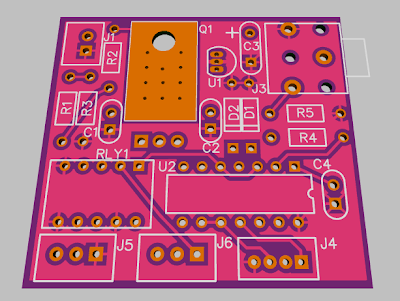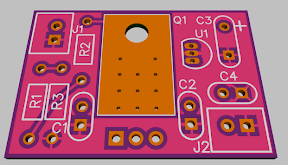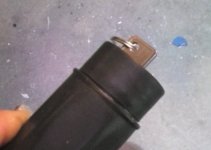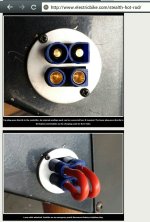Alan B
100 GW
Okay, the internet dropped out here for a few minutes in the midst of submitting the board, but it appears to be in now.
So in 10 days or so I'll have three bare boards. I have a Mouser order started with several of the parts that I don't already have. It will also require a DigiKey order as Mouser doesn't carry the JST-XH bits and I don't think I have the 4 pin units. On the final board it would be good to use the Grove connector if I can find that.
The next step is to buy parts, test and program one. This is a bit harder than the earlier projects in that programming of the chip is required. So anyone who wants to try testing this board will have to be up for that. Not sure there will be any volunteers.
I wrote some code for this awhile back, but it is not tested either, other than passing compiler checks, and the pinout is different on this setup as well as a few other changes.
So I'll probably have to test this one myself, which means it is competing with a bunch of other projects. This should be easier than the Battery Monitor which has fine pitch soldering along with more programming complexity. I need to get my hot air soldering station tuned up before I tackle that one. So this one may be able to go first.
So how can we make this available to ES members?
A bare board isn't much good for most folks as the programming equipment is required. A few have that gear and could do that, but not most.
A mini-kit is probably the minimum practical setup - a bare board, a pre-programmed micro, and several key fobs that are already programmed in.
Partially assembled mini-kit - micro is soldered on the board, programmed, and key fobs provided.
Full kit - programmed micro and all parts except the RFID receiver.
Complete kit - Full kit plus RFID receiver.
Assembled and tested, with or without the RFID receiver.
And so on.
An additional complexity is the voltage ranges of the pre-regulator need to be determined and change both the FET and the resistors that set the ratio. So there is not just one set of fixed parts, it can vary depending on what you want it to cover voltage wise.
Not sure which way to go. If this project depends too much on my time, it may stall. If someone else wants to build and sell them, we might make an arrangement.
I would tend to start with a mini-kit and see how that goes. Might be able to ramp up to more later, though the demand may not be there.
So in 10 days or so I'll have three bare boards. I have a Mouser order started with several of the parts that I don't already have. It will also require a DigiKey order as Mouser doesn't carry the JST-XH bits and I don't think I have the 4 pin units. On the final board it would be good to use the Grove connector if I can find that.
The next step is to buy parts, test and program one. This is a bit harder than the earlier projects in that programming of the chip is required. So anyone who wants to try testing this board will have to be up for that. Not sure there will be any volunteers.
I wrote some code for this awhile back, but it is not tested either, other than passing compiler checks, and the pinout is different on this setup as well as a few other changes.
So I'll probably have to test this one myself, which means it is competing with a bunch of other projects. This should be easier than the Battery Monitor which has fine pitch soldering along with more programming complexity. I need to get my hot air soldering station tuned up before I tackle that one. So this one may be able to go first.
So how can we make this available to ES members?
A bare board isn't much good for most folks as the programming equipment is required. A few have that gear and could do that, but not most.
A mini-kit is probably the minimum practical setup - a bare board, a pre-programmed micro, and several key fobs that are already programmed in.
Partially assembled mini-kit - micro is soldered on the board, programmed, and key fobs provided.
Full kit - programmed micro and all parts except the RFID receiver.
Complete kit - Full kit plus RFID receiver.
Assembled and tested, with or without the RFID receiver.
And so on.
An additional complexity is the voltage ranges of the pre-regulator need to be determined and change both the FET and the resistors that set the ratio. So there is not just one set of fixed parts, it can vary depending on what you want it to cover voltage wise.
Not sure which way to go. If this project depends too much on my time, it may stall. If someone else wants to build and sell them, we might make an arrangement.
I would tend to start with a mini-kit and see how that goes. Might be able to ramp up to more later, though the demand may not be there.






